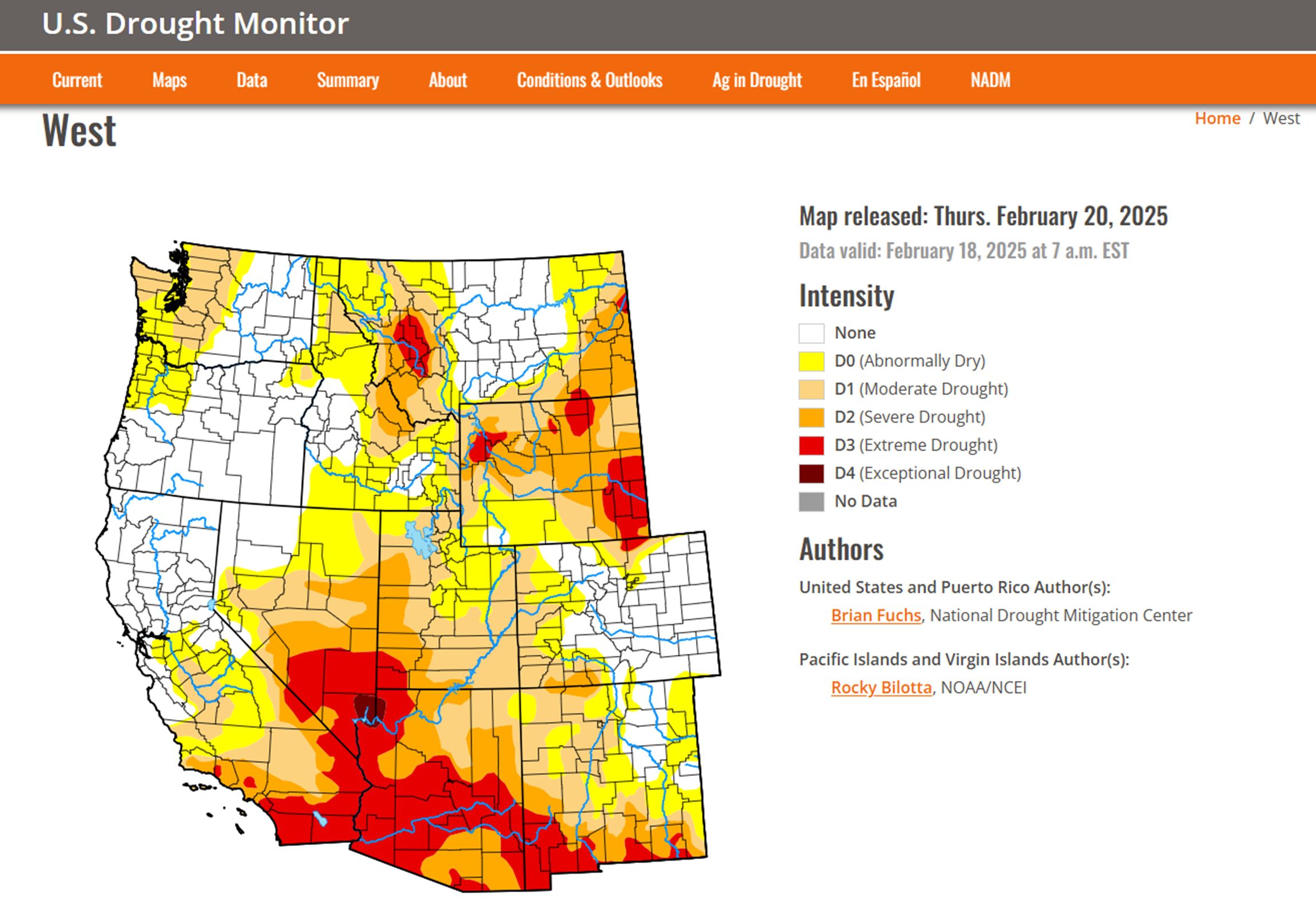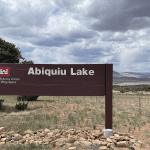- Drought expands across key areas of the Colorado River Basin, with worsening conditions in Arizona and Utah.
- Snowpack concerns persist despite recent storms, with below-normal levels in critical areas.
- Lake Mead and Lake Powell remain at historically low levels, threatening water allocations.
- Long-term outlook shows little relief, with warm and dry conditions expected.
February 24, 2025 — The latest National Drought Summary , released on February 20, 2025, highlights worsening conditions across the Colorado River Basin. While other parts of the country received significant rainfall and even flooding, much of the Southwest remains locked in persistent drought, with below-average precipitation and concerning snowpack levels.
, released on February 20, 2025, highlights worsening conditions across the Colorado River Basin. While other parts of the country received significant rainfall and even flooding, much of the Southwest remains locked in persistent drought, with below-average precipitation and concerning snowpack levels.
Snowpack Struggles.
Snowfall is the lifeblood of the Colorado River, which supplies water to 40 million people across seven states. This winter, however, snowpack levels remain troublingly low in key areas. Western Colorado and southern Wyoming, which feed the river’s headwaters, received only 75-85% of normal snowfall , a decline that could have lasting impacts on river flow this spring. In Utah, severe drought expanded across western portions of the state, further stressing regional water supplies.
, a decline that could have lasting impacts on river flow this spring. In Utah, severe drought expanded across western portions of the state, further stressing regional water supplies.
Reservoir Woes: Lake Mead and Lake Powell.
The nation’s two largest reservoirs, Lake Mead and Lake Powell, continue to hover at critically low levels. As of February 18, Lake Powell was at 32% of capacity, while Lake Mead stood at 29%, a stark reminder of the prolonged drought gripping the region. Without significant replenishment from mountain snowmelt, further restrictions on water allocations may be necessary.
Arizona and Nevada: Extreme Drought Expands.
Southern Arizona saw an increase in extreme drought conditions, particularly in Pima and Pinal counties. Northern Arizona and portions of Nevada also recorded below-normal precipitation, compounding long-term water shortages. In southern Nevada, groundwater levels continue to decline, raising concerns for Las Vegas and surrounding communities.
California’s Mixed Results.
California’s drought picture is complex. While recent storms brought temporary relief to some coastal areas, much of Southern California remains in severe drought. The Colorado River provides about 25% of Southern California’s water , making the region especially vulnerable to shortages. The Imperial Valley, a key agricultural hub, faces potential cutbacks as water allocations tighten.
, making the region especially vulnerable to shortages. The Imperial Valley, a key agricultural hub, faces potential cutbacks as water allocations tighten.
New Mexico and Wyoming: Some Improvement, But Not Enough.
New Mexico’s drought conditions showed little overall change, with southwest areas worsening. Wyoming’s western highlands, however, recorded some improvement thanks to recent snow events. Yet, with much of the state still well below normal precipitation, the long-term outlook remains uncertain.
Looking Ahead: No Quick Fix.
The 6-10 day outlook offers little hope for immediate improvement. Forecasts predict above-normal temperatures and below-normal precipitation across much of the West, including the Colorado River Basin. With spring snowmelt expected to be lower than average, water managers will face difficult decisions in the months ahead.
across much of the West, including the Colorado River Basin. With spring snowmelt expected to be lower than average, water managers will face difficult decisions in the months ahead.
As the drought tightens its grip, policymakers and water users across the Colorado River Basin must continue to adapt to a future where water is increasingly scarce. Whether through conservation efforts, technological innovations, or policy shifts, the region faces a critical challenge: securing enough water for millions in the face of a changing climate.
Image:
US Drought Monitor Map for the Western region released on February 20, 2025.
for the Western region released on February 20, 2025.





Leave a Reply